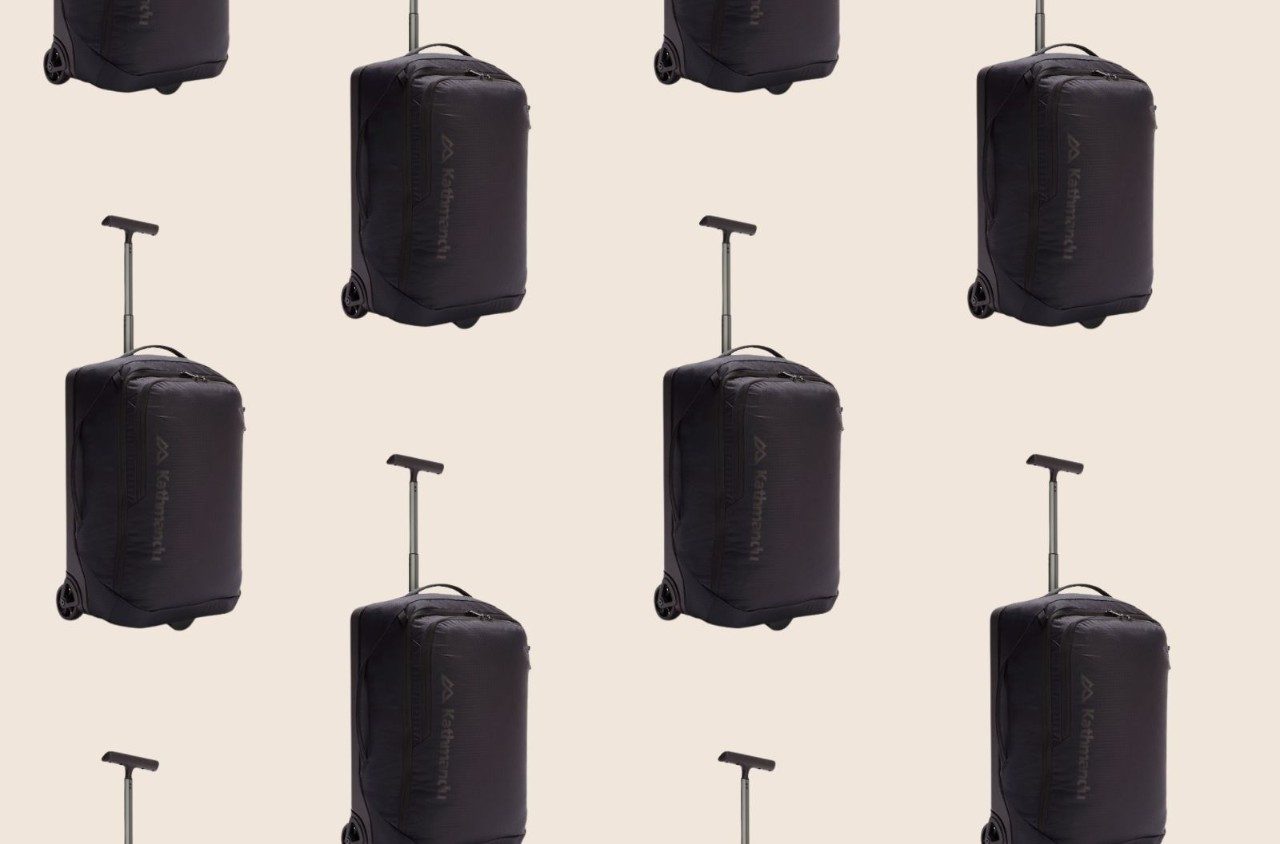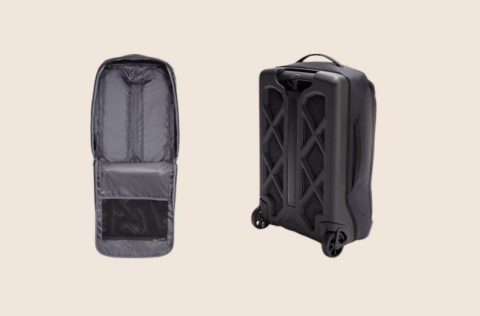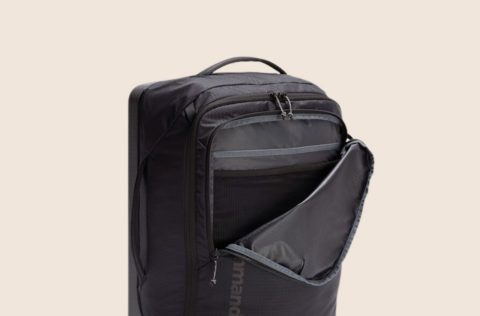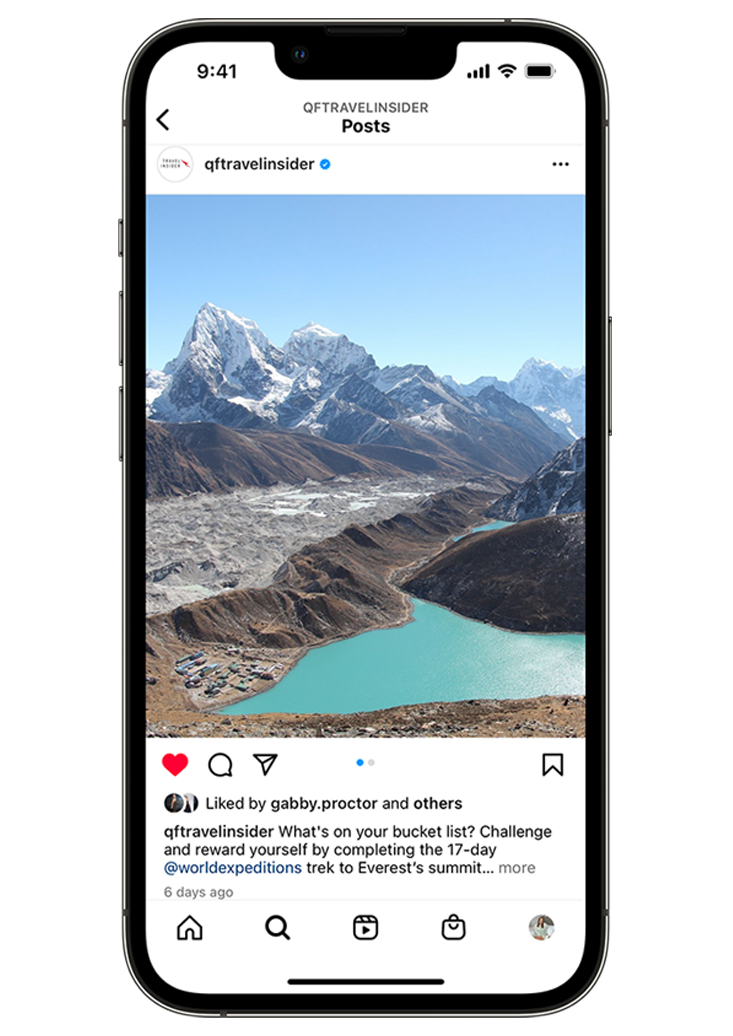We Trialled the “World’s Lightest Carry-on” — Here’s our Honest Review

Suitcase selection may be based on subjective criteria (you won’t find us without an external laptop pocket, for example) but there’s one universal feature that unites all travellers in their quest for the perfect carry-on: weight. When you’ve only got 10 kilograms – or less – to play with, even a few hundred additional grams can tip you into repacking territory.
That’s why our interest was piqued by the release of Kathmandu’s new Feather Flight carry-on, a bag they’re touting as “the world’s lightest”. We took the suitcase on a domestic flight to see what it’s really like in transit.
What is it?

Kathmandu’s new Feather Flight carry-on is a soft top, 40-litre capacity bag, featuring a standard pull handle and wheels.
Its biggest selling point? The fact that this little wonder clocks in at an impressive 1.6 kilograms. To put that in perspective: comparable carry-ons in the “light” category bob around the 1.8- to 1.9-kilogram range. Considering this, Kathmandu’s offering is certainly one of the lightest out there by quite a few precious grams.
The secret to its weight is its 93 percent recycled ripstop nylon and 7 percent ultra-high molecular weight polyethylene that forms the front (or top) of the case, backed by a patent-pending hard-shell plastic; something they’re calling the exLIGHT exoskeleton. This half-hard shell design gives the bag its structure and support while removing unnecessary bulk by utilising internal latticing in place of the shell. Think of it as a kind of backpack on wheels, with a bit more structure and support.
The experience
Although a domestic flight of under two hours doesn’t sound like a carry-on’s toughest road test, I beg to differ. A two-day stay in Melbourne doesn’t really warrant check-in luggage so it’s arguably a great test route for the bag and also for me – because if there’s one thing I like to organise, it’s my suitcase. Can it fit my always ill-advised amounts of reading material? Can I Tetris my toiletries in? It’s the perfect time to find out.
It was an unusually warm weekend in Melbourne, so I didn’t find it a particular hardship to fit everything I needed into the 40-litre case. I did have to rethink my packing layout, however: the internal structure is different to a standard carry-on and I had to deviate from my regular clam-shell case configuration of a clippable belt section on one side and zippable mesh pocket on the other. (For me, clothing goes in the former, while shoes and toiletries go in the latter).
The Feather Flight is different. As I mentioned, it’s basically a backpack on wheels so when you lay it flat, the top flap opens like a door rather than the whole suitcase opening like a book. This definitely took some getting used to, especially as things don’t stay in place the way they do when a belt and mesh pocket are involved. Also, my standard division of stuff wasn’t going to fly here. The internal pocket attached to the opening flap doesn’t extend all the way down, so it can only fit smaller items such as socks and charging cables. My shoes had to be stowed in the same pocket as my clothing – to keep dirt away, I popped them in a packing cube first.
One absolute necessity for me in a carry-on is an external laptop pocket, as I’m so often working while travelling. I want easy access to my tech, so I can shove it back in at the last minute before boarding or whip it out easily after take-off.
Thankfully, the Feather Flight does have a large zipped front pocket for this purpose, with an internal fabric pocket that fits my 16-inch laptop, keeping it snug within the nylon fabric. (It also fits it when encased in a neoprene cover). Although I prefer a hard shell for its protective and waterproof properties, the bag’s fabric has a kind of coating on its interior, so I’d wager it would be somewhat water-resistant should I get caught in a downpour.
One thing I did immediately notice was the bag’s lack of 360 wheels. While the suitcase does its thing with no discernible difficulty on tiles and carpet, not being able to move it in any direction takes some getting used to and the bag tends to do a little dance if I change directions too quickly.
The positives
The weight of this bag is seriously impressive. Although I’m not an overpacker, I do frequently have to bring a laptop and a book or two, which means I give over about 2.5 kilograms of the standard 10 to just these items. Couple that with a three-kilo case and I’m often forced to wear my heaviest pair of shoes or bulkiest outerwear on the plane so I don’t have to repack at the boarding gate.
Despite my preference for the sturdiness of a hard shell case, I actually appreciate the soft shell structure. Shoving a just-in-case-jumper into the mix after the rest of my goodies went in tested the capacity of the soft shell top and it had the ability to stretch and reshape to accommodate the late addition.

The drawbacks
A suitcase without 360 wheels isn’t a deal breaker but it certainly takes some getting used to. There’s an awkwardness to only being able to wheel it in (mostly) a straight line that disrupts ease of movement in spaces you’re usually breezing through, such as toilet stalls, a coffee line or simply rounding corners.
One non-negotiable for carry-on is the outer pocket for my laptop. Though this had one, I wasn’t sure if it would offer the same level of hard-shell protection when stashed in the overhead locker.
Our verdict
It’s hard to argue with a suitcase that removes (in my case) a whopping 1.6 kilograms from my overall carry-on weight. Because I like the security and sturdiness of the hard shell (and carry-on rules are a little more permissive on international journeys), I’ll be sticking with my hard-shell case for overseas trips. For short-haul travel, when weight is a serious consideration on domestic flights and I’m spending a higher proportion of time in transit jumping from taxis to tarmac and back again in a few short days, I’ll be taking this bag.


